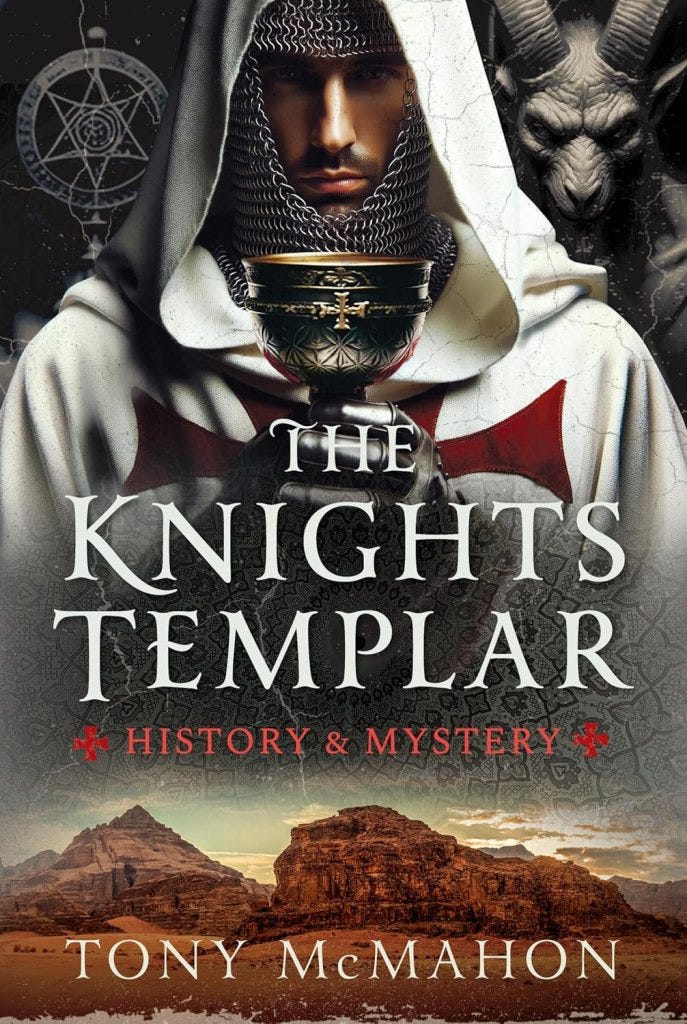Greetings Gold and Silver Level Templar Knights! Here are a few things you may never have known about the Templars. Read on!
The Knights Templar - people think they know all about these knights but they're just scratching the surface. So I've decided it's time to share some key Knight Templar facts in one blog post. Prepare to find out what happened at the Horns of Hattin and is it true that the Templars kept slaves?
The Templars and the slave trade
It’s been alleged that the Knights Templar were involved in the medieval slave trade but is there any truth in this? To be clear, this is not the trans-Atlantic slave trade, nor does it have anything to do with the horrendous traffic in African slaves from the fifteenth to the nineteenth centuries. But it’s certainly a stain on their reputation if it happened – no matter where or on what scale.
We begin with the Templars engaged in all sorts of trading in the town of Ajazzo, known in Armenian as Ayas, located today in modern Turkey. In the thirteenth century it was part of the Armenian kingdom of Cicilia, a Christian territory linking the Byzantine empire to the increasingly beleaguered crusader states of the Levant.
By the time the Templars were active in the kingdom, it was taking a hammering from Mongol armies that had stormed out of the east, Mamluk armies from the south and Turks from the north. Inevitably, the kingdom just kept shrinking until it was completely absorbed in to the Turkic Ottoman empire.
Before that happened though, it benefited from the criss-cross of trade in the region and it’s said that both Mongol and Turk slave drivers brought their human cargo to Ayas to trade the live bodies to the highest bidders. Some of those bidders, it’s said, were Templars. They basically bought up the slaves and took them back to work on the estates attached to their preceptories.
The Knights Templar and the Al Aqsa Mosque
The Knights Templar believed that the Temple Mount in Jerusalem had been the Temple of Solomon, destroyed by the Babylonians some 1500 years earlier. Under Muslim rule from the 7th century CE, the Al-Aqsa Mosque was built on the Temple Mount and became the third holiest site in Islam. Muslims believe that the Prophet Muhammad was taken by night from the Sacred Mosque in Mecca to Al-Aqsa Mosque, and then ascended to heaven from there.
The Night Journey is a significant event in Islam, highlighting the importance of Al-Aqsa as a place of divine connection and spiritual elevation for Prophet Muhammad. It is believed that the Prophet Muhammad led prayers at Al-Aqsa before ascending to heaven, making it a place where prophets have walked and prayed.
After Jerusalem was taken by the crusaders in 1099, two Muslim buildings on the Temple Mount were consecrated as Christian places of worship. The Dome of the Rock became the Temple of the Lord and the Al-Aqsa Mosque became the Temple of Solomon. When the Knights Templar were formed in 1118, they were given the Al-Aqsa to be their headquarters. They carried out significant building work, some of which is now incorporated into the mosque you see today.
Templars were executed after the Battle of Hattin
The Battle of Hattin, fought in 1187, was a decisive victory for Saladin and the Muslim forces against the Crusader armies. As a consequence of this defeat, the Crusader states in the Holy Land were severely weakened, and Jerusalem was subsequently captured by Saladin.
In the aftermath of the battle, Saladin ordered the execution of captured Templars and Hospitallers. He understood their military strength and commitment to the Christian faith, which posed a continued threat to his forces. The Templar Master, Gerard de Ridefort, was spared, not because Saladin had a change of heart, but rather because he was seen as a valuable asset for potential ransom.
King Henry III pawns the Crown Jewels of England
The King of England pawned the Crown Jewels to the Knights Templar to raise money for his wars. Basically, the regalia of state was kept by the knights as security on a loan. It seems incredible but evidences the financial sophistication of the order.
The Knights Templar were not ordained priests
While the knights took the monastic vows of poverty, chastity, and obedience, they were not ordained priests. This is an important distinction to make. A Templar could not administer the holy sacraments or say mass in church. There were chaplains within the order who could do that - but not the knights.
The ordained priests and the lay knights had distinct roles within the order, with the priests focusing on spiritual matters and the knights on military and administrative duties. The video below summarises these points - enjoy!
If you would like to know more about the Knights Templar, then get your hands on a copy of my book: The Knights Templar – History & Mystery. Published by Pen & Sword and available on Amazon, Waterstones, Barnes & Noble, and WHSmith. Don’t miss out on your copy!






